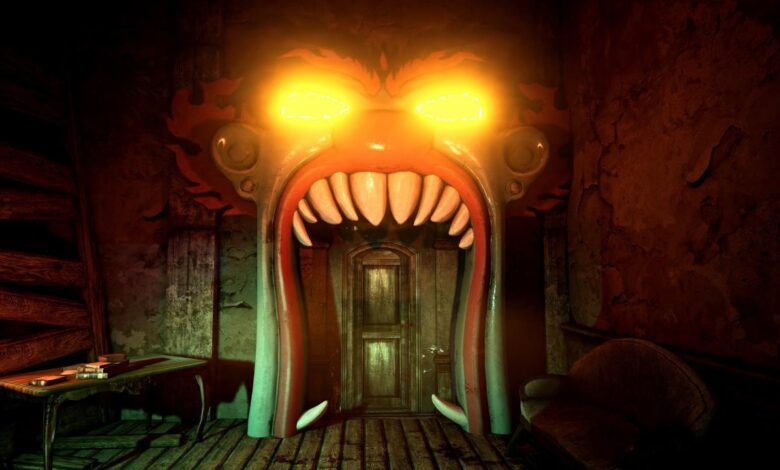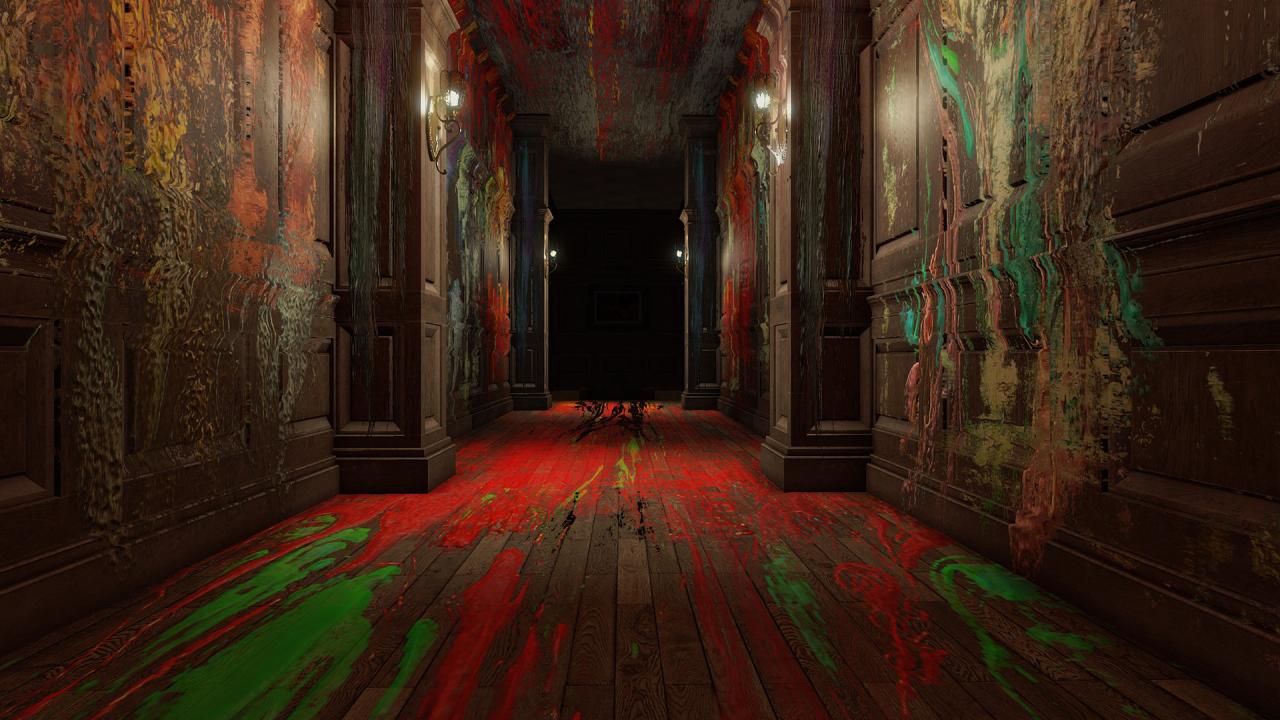The Deepest Scares: New Indie Horror Games

Forget the big-budget jump scares and predictable plots that dominate mainstream horror. The true, creeping terror in 2025 is emerging from the independent development scene.
Indie horror games, often fueled by passion, limited resources, and boundless creativity, are currently the best places to find unique mechanics, genuinely disturbing narratives, and atmospheres so thick with dread you can practically taste the fear.
These developers aren’t trying to please everyone; they’re trying to scare you, personally, by finding the dark, specific corners of psychological terror that big studios often ignore.
If you’re a horror connoisseur looking to find the next game that will keep the lights on long after you’ve stopped playing, you need to look past the usual best-seller lists.
We’re diving into the small, specialized releases that are redefining fright through clever design, oppressive soundscapes, and narratives that linger. Get ready to explore the darkest corners of the gaming world, where creativity is weaponized to maximize dread.
The Art of the Indie Scare

Why does independent development excel in the horror genre? The answer lies in the nature of terror itself.
Fear is subjective, often triggered by vulnerability, psychological pressure, and the unknown. Indie developers, free from shareholder pressure, can focus on these specialized elements rather than generic action.
A. Focused Vulnerability
Big-budget horror often gives the player weapons, reducing the core emotion from fear to action. Indie games strip the player bare. You’re often unarmed, slow, and dependent on wit, not firepower, to survive. This forced vulnerability is the engine of true terror.
B. Aesthetic and Stylistic Freedom
Indie teams aren’t constrained by photorealism. They can utilize lo-fi graphics, found-footage aesthetics, distorted color palettes, or bizarre retro styles to create unsettling, dreamlike realities that defy conventional expectation. The scare comes from the unfamiliar art itself.
C. Mechanical Innovation
Since they lack the budget for huge worlds, indie developers often pour their creativity into one or two unique mechanics. This could be a novel way of observing enemies, a non-standard control scheme that creates panic, or a narrative device that forces you to make truly uncomfortable choices.
D. Deep Psychological Impact
Indie horror often tackles mature, complex, or taboo subjects—grief, isolation, paranoia, and digital decay. The horror isn’t just external; it’s an internal battle for sanity, which leaves a much deeper, more personal scar on the player.
Found Footage and Lo-Fi Dread

The current trend toward liminal spaces and the aesthetic of digital decay is powerfully utilized by lo-fi horror. These games often mimic old VHS tapes, corrupted files, or early 3D console graphics, weaponizing nostalgia and imperfection.
A. The Void Stares Back
This game masterfully uses a VHS filter and the aesthetic of a late-90s security camera feed. The core mechanic involves managing a limited battery supply while navigating an abandoned industrial complex.
The horror is built on audio cuesand the unreliable, glitching nature of the surveillance technology. The moment the feed cuts out, or the static overwhelms the screen, is the most terrifying part. You are never sure if the monster is real, or just a digital artifact.
B. Ghost in the Machine
A terrifying fusion of puzzle and survival, Ghost in the Machine plays out entirely on an old desktop interface. You must navigate a corrupted operating system to find clues about a disappearance.
The scares come from files that corrupt in real-time, desktop icons that move on their own, and invasive pop-ups that transition from annoying to genuinely malignant. This game exploits the subtle paranoia of digital space.
C. Night Signal
Taking inspiration from early PlayStation-era survival games, Night Signal embraces deliberate mechanical clunkiness. The fixed camera angles and tank controls aren’t bad design—they’re central to the fear.
The limited visibility and awkward movement ensure you’re never truly in control, amplifying the dread as you traverse a dark, blocky, isolated town where light and shadow play tricks on your mind.
Psychological and Narrative Scars
These games dive deep into the emotional and psychological trauma of their characters, using the horror elements to represent internal struggles rather than just external threats.
A. The Unfolding Lie
A masterful piece of recursive storytelling. You play a therapist reading the journal of a patient suffering from extreme paranoia. The twist is that the patient’s narrative begins to affect your reality within the game interface.
Words change, files disappear, and the borders between the patient’s delusion and your own game world blur. This game is highly praised for its mature handling of mental health themes and its unnerving meta-narrative structure.
B. Grief Eater
This is less about monster hunting and more about guilt and spiritual burden. Set in a perpetually rain-drenched coastal town, you play a character who can temporarily absorb the emotional trauma of the recently deceased.
The gameplay involves exploring the environment and solving environmental puzzles, but the true horror is bearing the weight of other people’s suffering. As your character’s burden grows, the environment becomes increasingly distorted and aggressive, forcing you to manage your psychological load.
C. Beneath the Surface
A slow, atmospheric thriller set aboard a derelict deep-sea research vessel. The horror is built entirely on isolation and sonic dread.
There are few visible monsters; instead, the terror comes from the persistent, oppressive darkness and the unnerving sounds—the groaning of the hull, the distant, unexplained echoes, and the feeling of being miles below the light, completely cut off. It’s an exercise in extreme psychological pressure.
Unique Mechanic-Driven Terrors
These developers invent a new way to play their game, and then build the terror around the limits and failures of that specific mechanic.
A. Echo Chamber
This game requires a microphone to play. The enemies react only to sound, but the puzzles require you to speak, whisper, or use controlled breathing.
The tension is incredible, forcing the player to manage their own noise output in the real world. A sudden cough or an accidental sound can seal your fate. This unique mechanic breaks the fourth wall and makes the fear deeply personal and real.
B. The Shifting Maze
A brilliant take on the first-person perspective. The maze is constantly—and silently—reconfiguring itself. To map your surroundings, you must rely on a crude, in-game camera that only takes three photos.
You must use these limited snapshots to cross-reference your location, all while a creature hunts you. The horror lies in the constant, gnawing feeling of unreliable memory and spatial instability.
C. Sight Unseen
This title is entirely a text-based psychological thriller, but with a twist: the environment is described to you in poetic, increasingly unreliable ways.
The mechanic forces you to draw a map on actual paper beside your computer, based purely on textual descriptions. When the game lies to you—describing a door where none exists, or changing a corridor’s length—your real-world map becomes useless, resulting in a sudden, sharp panic derived from losing your sense of space.
Environmental and Creature Design Excellence
While focusing on unique mechanics, some indie teams excel at creating creatures and environments that are immediately iconic and deeply disturbing.
A. The Grotesque Reality of Flesh and Filth
This game draws inspiration heavily from body horror and biomechanical decay. The environments are living, breathing, pulsing masses of corrupted technology and organic matter.
The creatures are not demons or ghosts, but horrifying fusions of human and machine, forcing the player to navigate spaces that feel profoundly wrong and biologically repulsive. It taps into the deepest revulsion of the human form being corrupted.
B. The Rural Archive
A slow-burn, folk-horror experience set in an isolated, perpetually foggy 19th-century farming community. The horror is entirely derived from supernatural dread and slow-revealed lore.
The monsters aren’t jump-scare fodder; they are ancient, vaguely described entities from local mythology. The game’s excellence lies in its ability to make the player feel the weight of centuries of dark ritual through subtle environmental details and cryptic journals.
C. Factory Worker Simulator
This title takes a seemingly mundane setting—a dreary, late-night shift at an automated factory—and weaponizes it. The creatures are the malfunctioning robots and distorted production line machinery.
The true horror is the realization that the mechanized, cold efficiency of modern life has become the antagonist. The scares are rhythmic, procedural, and entirely unnerving, playing on themes of labor exploitation and dehumanization.
Conclusion
The independent horror space in 2025 is a testament to the fact that creativity always trumps budget when it comes to eliciting authentic fear.
The big studio blockbusters often rely on repetition of proven scares, but the titles mentioned here—from Echo Chamber‘s innovative microphone mechanic to The Unfolding Lie‘s masterful psychological fracturing—are breaking the mold.
They remind us that the most effective horror is often highly personal, technologically innovative, or architecturally strange.
These unpopular, yet essential, games are the laboratories of the horror genre. They experiment with lo-fi aesthetics to evoke digital paranoia, they use deep narrative structures to turn guilt and grief into physical threats, and they invent brand-new mechanical hurdles that force the player into uncomfortable, vulnerable positions.
By focusing on niche appeal—be it lo-fi graphical filters, reliance on player audio, or complex deduction—these developers create experiences that stick with you, not just for the thrill of the chase, but for the philosophical and psychological implications of their narratives.
For the dedicated gamer, seeking out these hidden scares is crucial. It’s an investment in original design and a commitment to experiencing horror that genuinely challenges the mind and the senses.
By supporting these smaller projects, you are fueling the future of a genre that thrives on innovation and the willingness to explore the darkest, most unsettling corners of human experience.
Don’t let their obscurity fool you; these are the games that will truly scare you, and in doing so, they will redefine your understanding of digital terror.